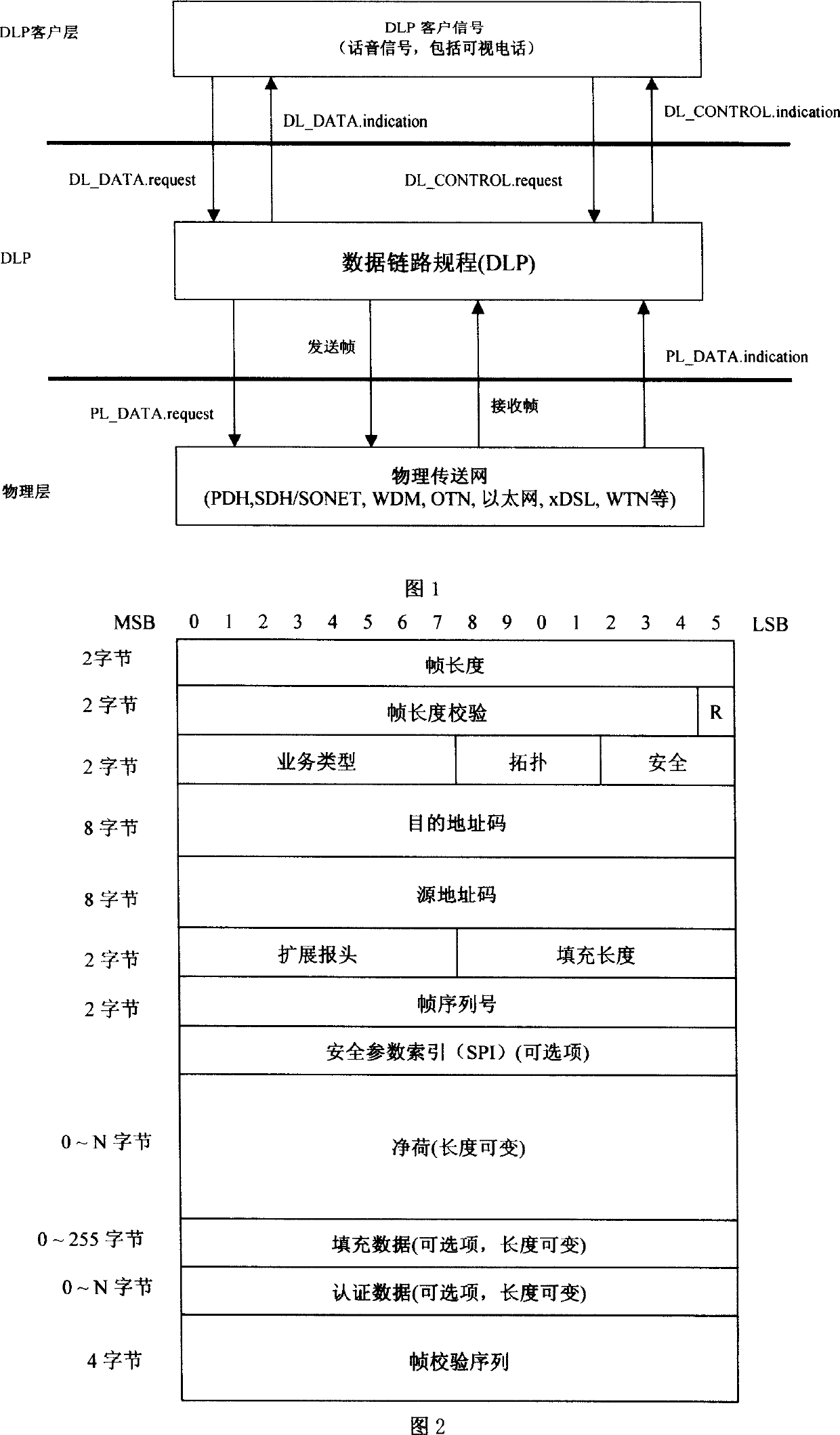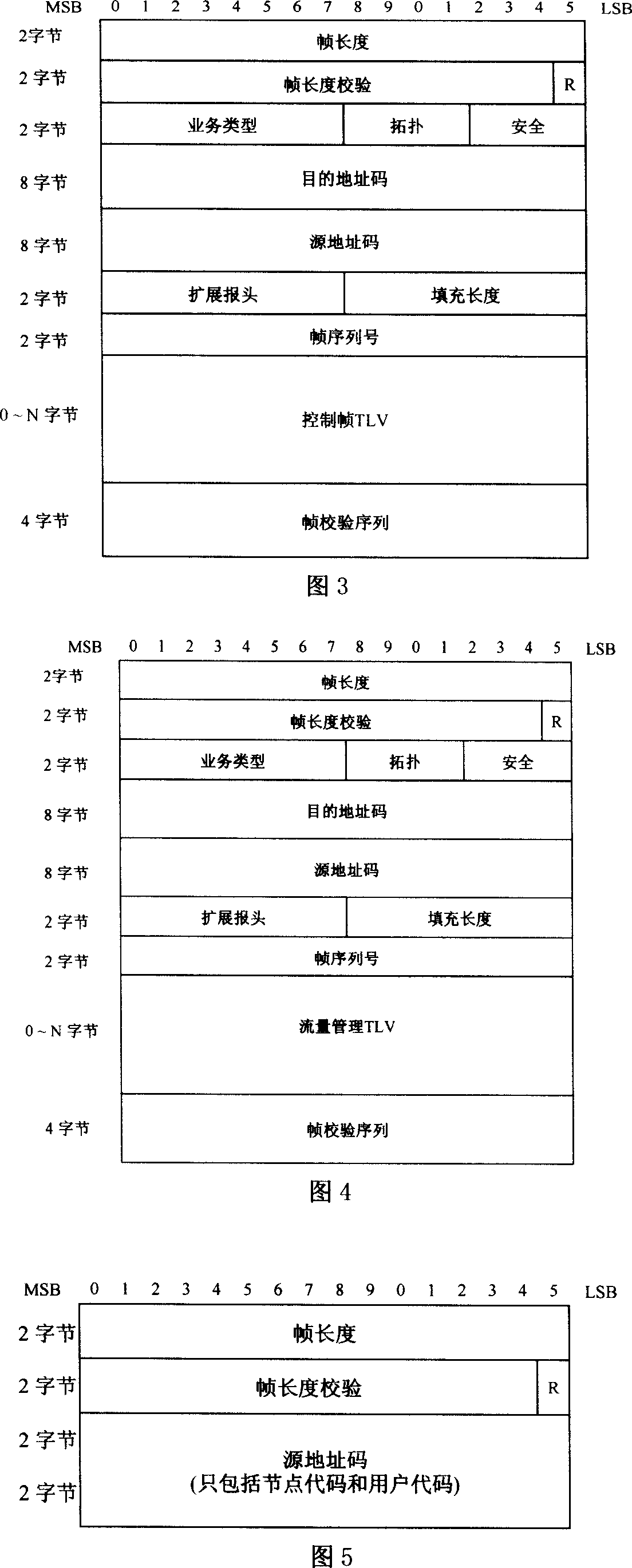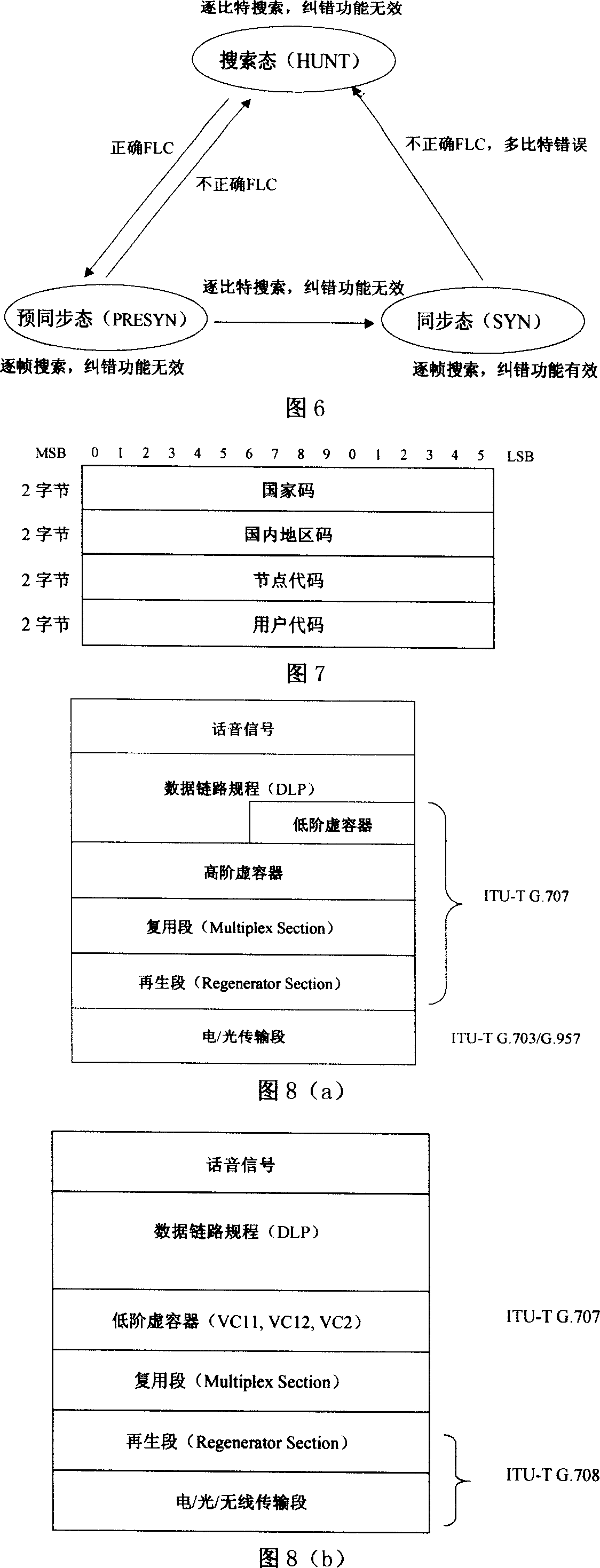[0007] (1) Line utilization is low
Because it establishes a dedicated connection link between the two parties in the call, only one party, such as user A, has a signal transmitted to the other party (assumed to be user B) during the actual call. At this time, the line between user B and user A is in an idle state. But this line is still occupied
In addition, the actual test shows that even when user A sends information (speech) to user B, there is still a lot of time in the state of no information (that is, no speech), and user A still occupies the entire line from A to B during these times. This method of
telephone communication is like a
car driving on a highway. If a car wants to go from one place to another, it must reserve two lanes, one for the direction of travel and one for return. When the car is driving, the front and rear lines and the return lane are empty. Although this communication method has
service quality assurance, the efficiency is obviously inefficient (because the front and back are empty, it can be guaranteed that there will be no traffic
jams, but a road (lane) can only run one car, and the efficiency is obviously inefficient). An inefficient communication method will inevitably lead to high communication costs
[0008](2) Unable to provide new business
Since this traditional voice communication network is a dedicated technology designed solely for the transmission of voice services, it is difficult to develop new services on this network. Various information including voice, data, video and
multimedia, for which the traditional voice network cannot meet the requirements of users
It is generally believed that the unified public network in the future will be a network using packet switching, which is why the research and development of
telephone network technology using
circuit switching has been stopped globally. The existing
telephone network has a complete set of communication mechanisms, including telephone Number addressing architecture, the existing voice
transmission network technology cannot be directly transitioned to the next generation unified public network
If IPv6 is adopted, the overhead will be greater, and if the overhead of the
data link layer is added, the
processing level will be more, and the technology will be more complicated
For data, it does not matter much to resend multiple times, but for voice services, due to its high real-time requirements, users cannot wait for the resend of the signal, otherwise
confusion will occur. In addition, because each IP packet in the network It is independently processed and transmitted. It is possible that the IP packets sent later will arrive first, and the ones sent first will arrive later. This situation does not matter to the IP packets, but it will not work for voice services, because this may cause the words spoken later to arrive first and spoken first. If the words come later, the consequences can be imagined
[0014](3) Since IP implements the routing and forwarding
processing of IP packets through IP addresses, while ordinary telephones use telephone numbers to implement call connections, so when using When IP transmits voice, it is necessary to realize the mapping from
telephone number to
IP address, which increases the
processing level on the one hand, and another
disadvantage is the shortage of IP addresses
If you use IPv6, you can change the shortage of IPv4 addresses, but IPv6 is not compatible with IPv4, so you have to use IPv6, but now the world has built a huge network in terms of IPv4, although there are tunneling protocols that can implement IPv6 in IPv4 networks However, in fact, most IPv4 network devices do not support this function, so there is currently no way for IPv6 and IPv4 to communicate with each other
[0015](4) Lack of safety mechanisms
As we all know, the existing IP network does not have any security. The IP packet itself can be modified, and its content can be stolen, copied, and changed. In this way, if the content of the user's call needs to be kept secret, the existing IP network cannot meet the requirements. Information is not safe
If the user'
s voice needs to be kept secret,
IPsec can only be used (
IPsec is an IP security mechanism formulated by
the Internet Engineering Task Force IETF (IETF is the standard organization of
the Internet, which is the English abbreviation of the Internet
Engineering Task Force) of the Internet standard organization), such a On the one hand, it increases the overhead, on the other hand, it increases the processing level, and the time required for
encryption processing itself may make it more difficult to meet the real-time requirements of voice services
[0016](5) The existing IP network does not have network protection switching function, especially the 50ms switching function, which is essential for voice services, 50
Millisecond switching means that once the network fails, such as a line or equipment failure, it is required to switch the call line from the faulty line to another normal line within 50 milliseconds. If this function is realized within 50 milliseconds , the user does not feel the interruption of the call. Since the IP adopts the third-layer switching, the
switching time of the current IP network is the fastest within a few seconds, which obviously cannot meet the requirements.
[0017] (6) The existing IP network uses two types of routing protocols (one is the internal gateway protocol, and the other is the external gateway protocol) to realize the forwarding of IP packets Relying on the existing
routing protocol to realize the forwarding of IP packets has no
traffic engineering capability, which may lead to the fact that even if there are multiple links between two nodes to realize the transmission of data packets, the
router may rely on routing protocols to forward IP packets All are forwarded to one link, resulting in congestion of the link, while the other link is idle at this time, resulting in
packet loss and loss of voice signals
[0018] (7) The existing
telephone network has a complete set of communication solutions. After more than 100 years of development, a complete network
system has been built. If the traditional telephone network is simply superimposed on the IP network, then the entire technology will be realized in a short time. It is very complicated, and it has been proved that because the IP network has no
service quality guarantee, it is not feasible to simply superimpose a telephone
network on the IP network to realize the
packet transmission of the voice service. This transmission method has no service quality guarantee. , only relying on the existing IP technology is not enough to construct the next generation of unified carrier-class public network
Because the design of ATM is seriously out of line with the market demand, and its technical conception is too perfect, the technical realization is very complicated, and
standardization cannot be realized for a long time, so it cannot be applied on a large scale. Development, whether it supports Internet technology has become an important factor to measure whether a communication technology has
vitality. ATM must support Internet services if it wants to develop. However, because the Internet is a variable-length packet service, ATM is a fixed-length packet service. Packet technology, the overhead of ATM in transmitting IP services is too large, reaching about 25%, and the transmission efficiency is extremely low
As the IP service gradually becomes the mainstream service of the future network, and because the ATM equipment is expensive, the technology is complex, and cannot support the rate above 10Gbps, ATM has gradually become an obsolete technology, so the use of ATM to transmit the voice service has not been obtained. For large-scale applications, it is impossible to use ATM to unify the entire network, and it becomes an impossible technology to use ATM to realize packet voice transmission.
 Login to View More
Login to View More  Login to View More
Login to View More 


